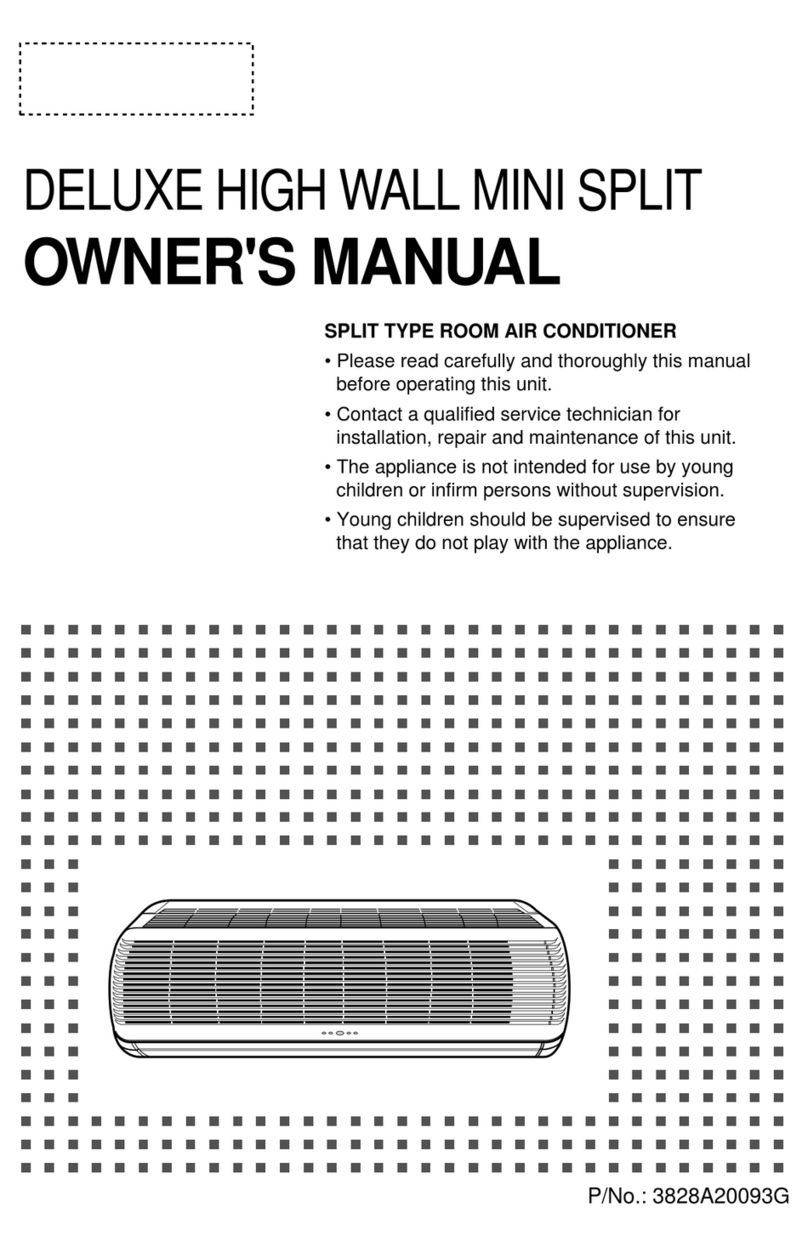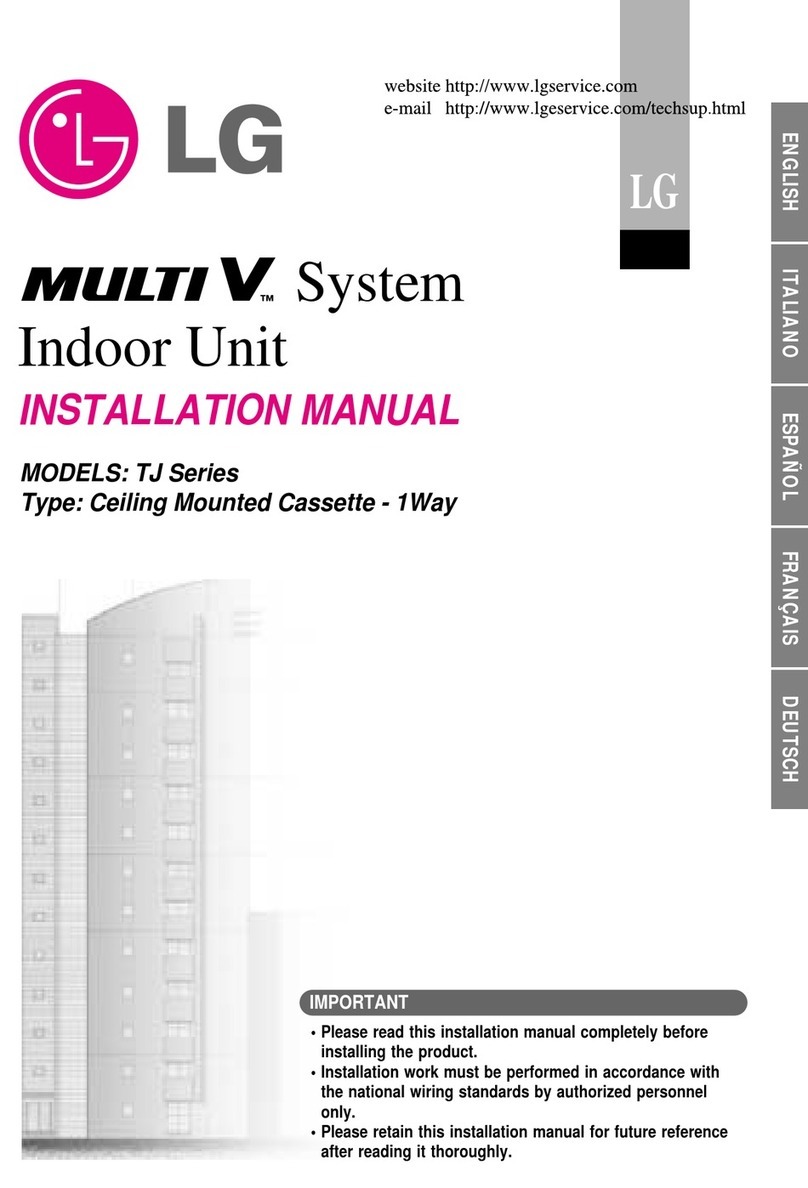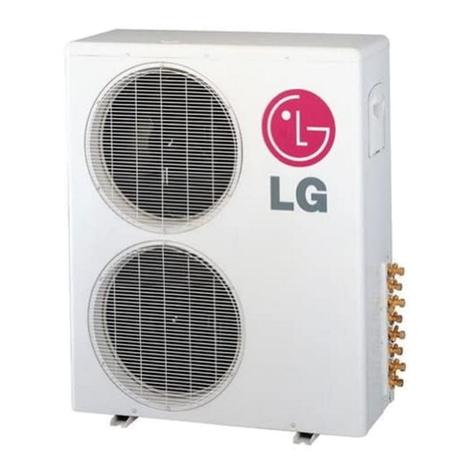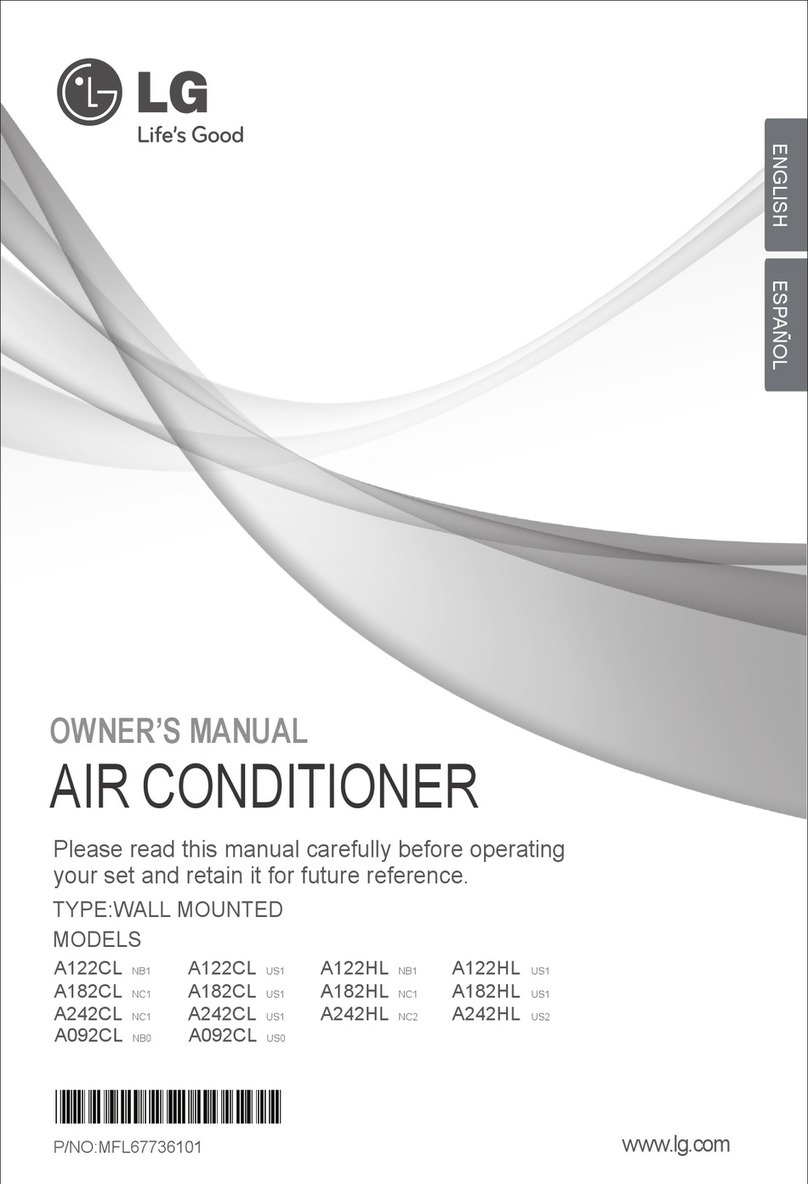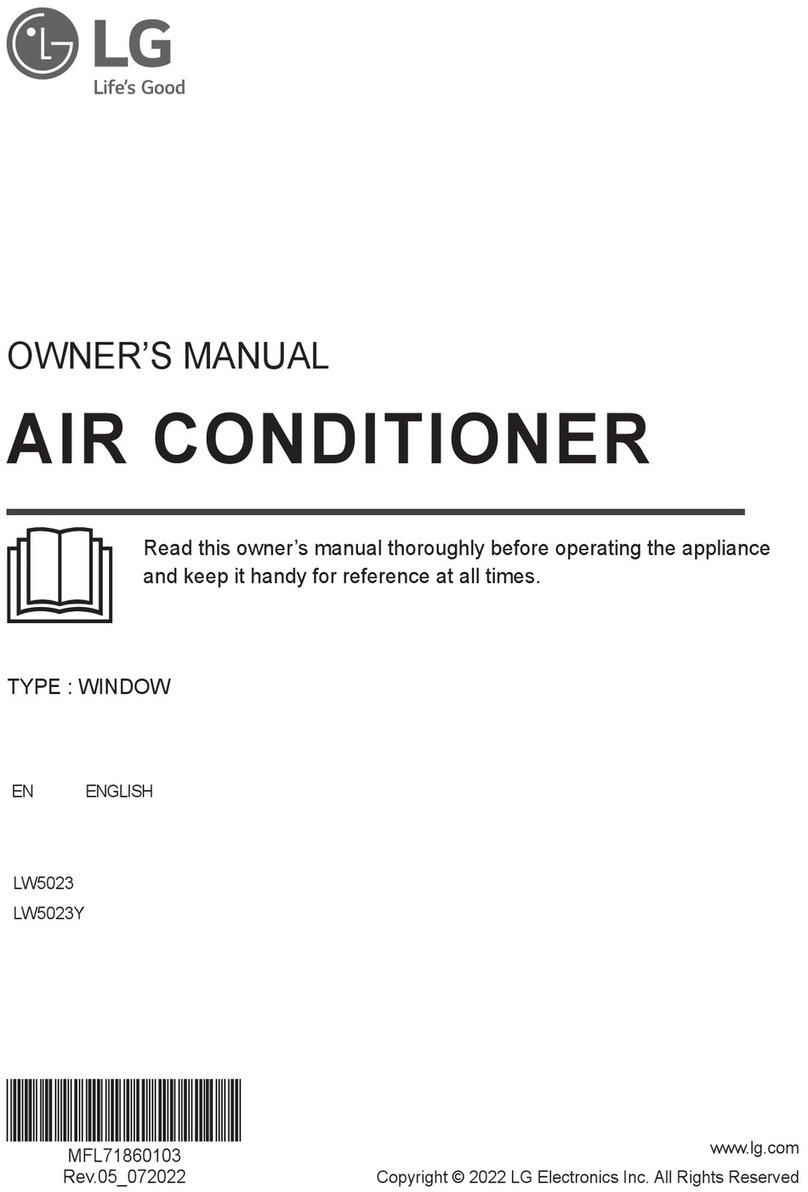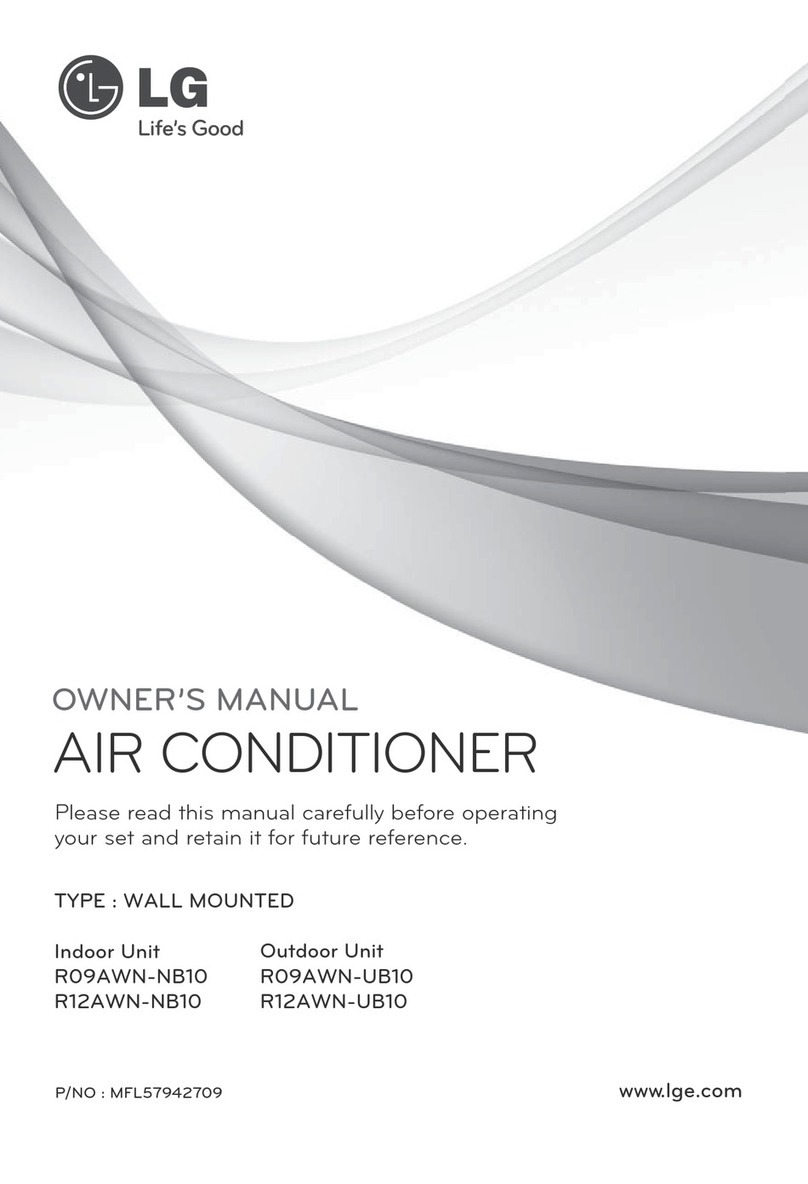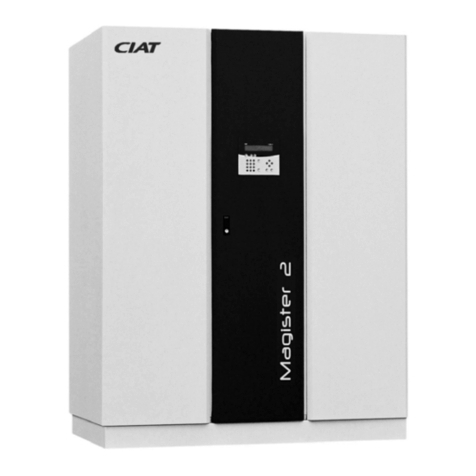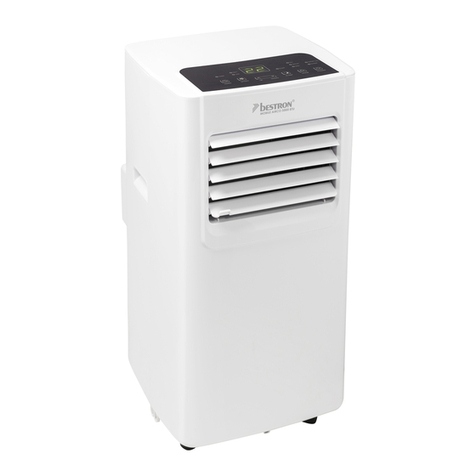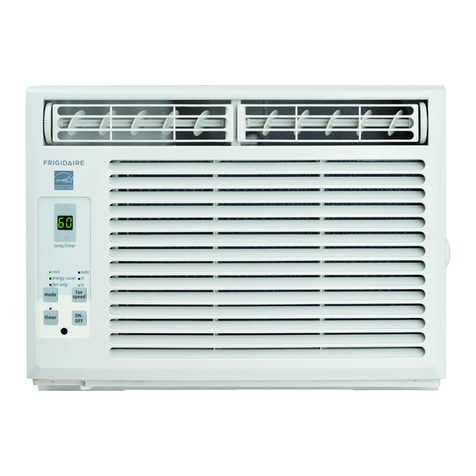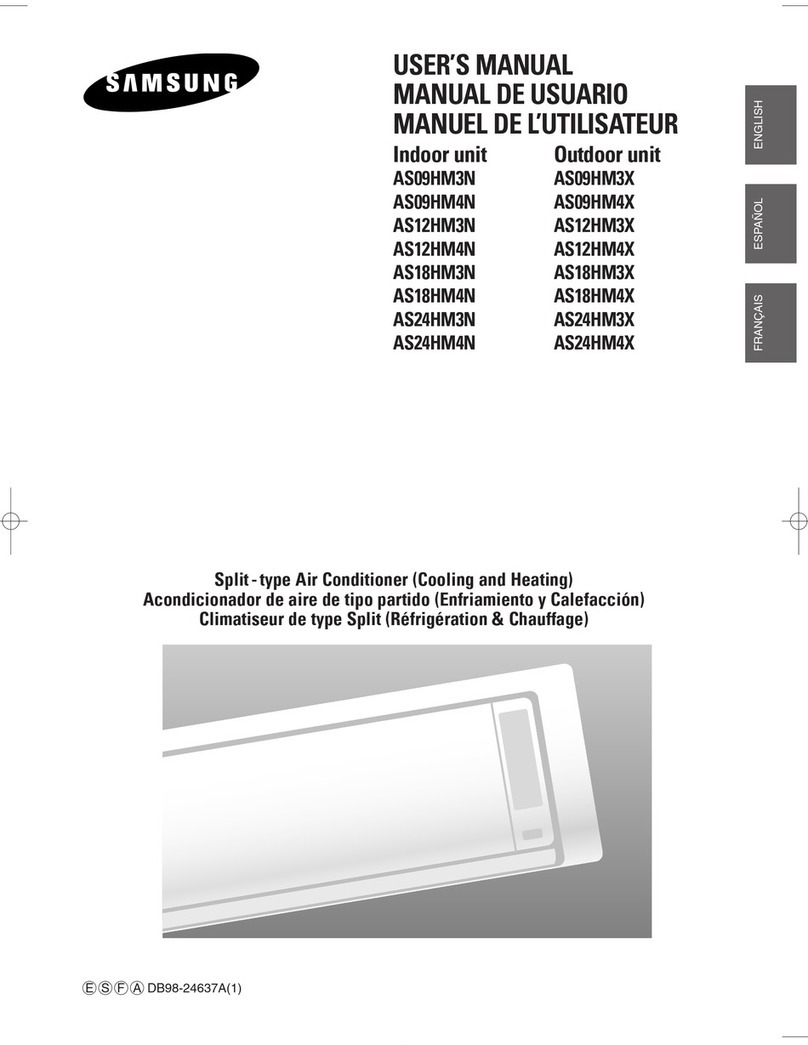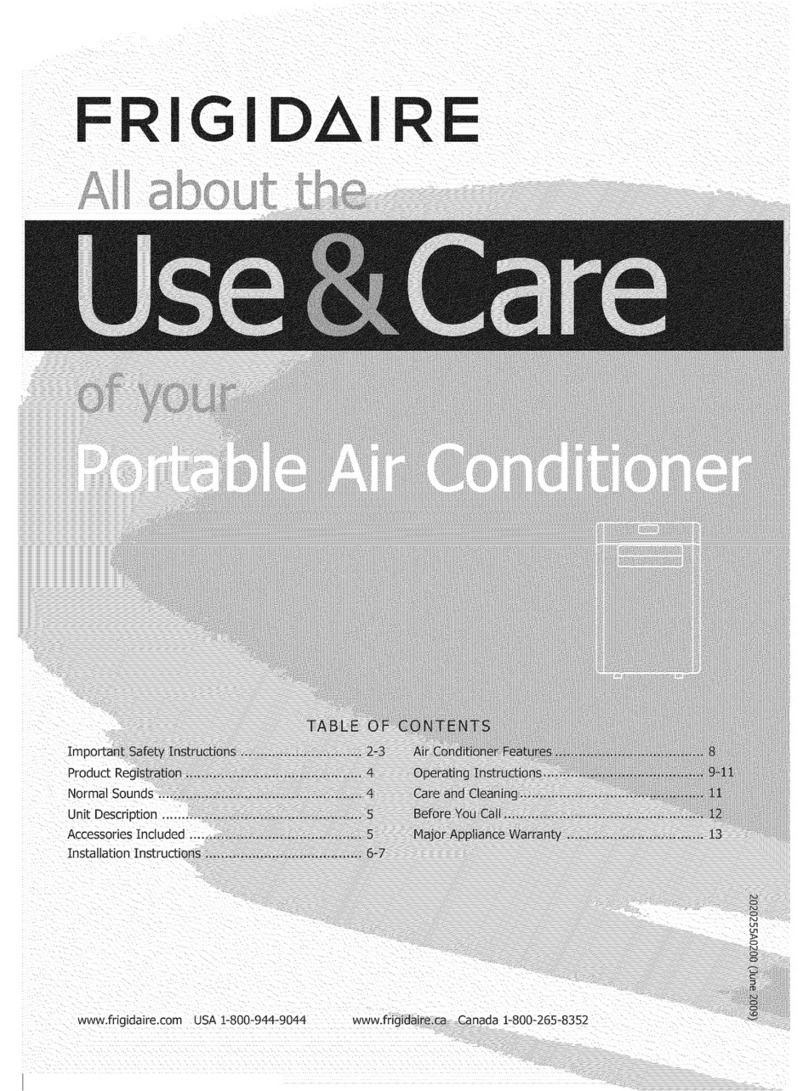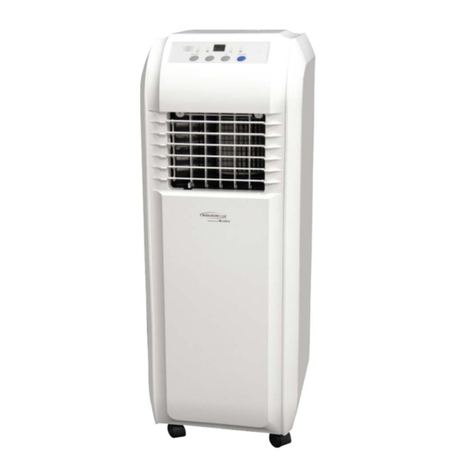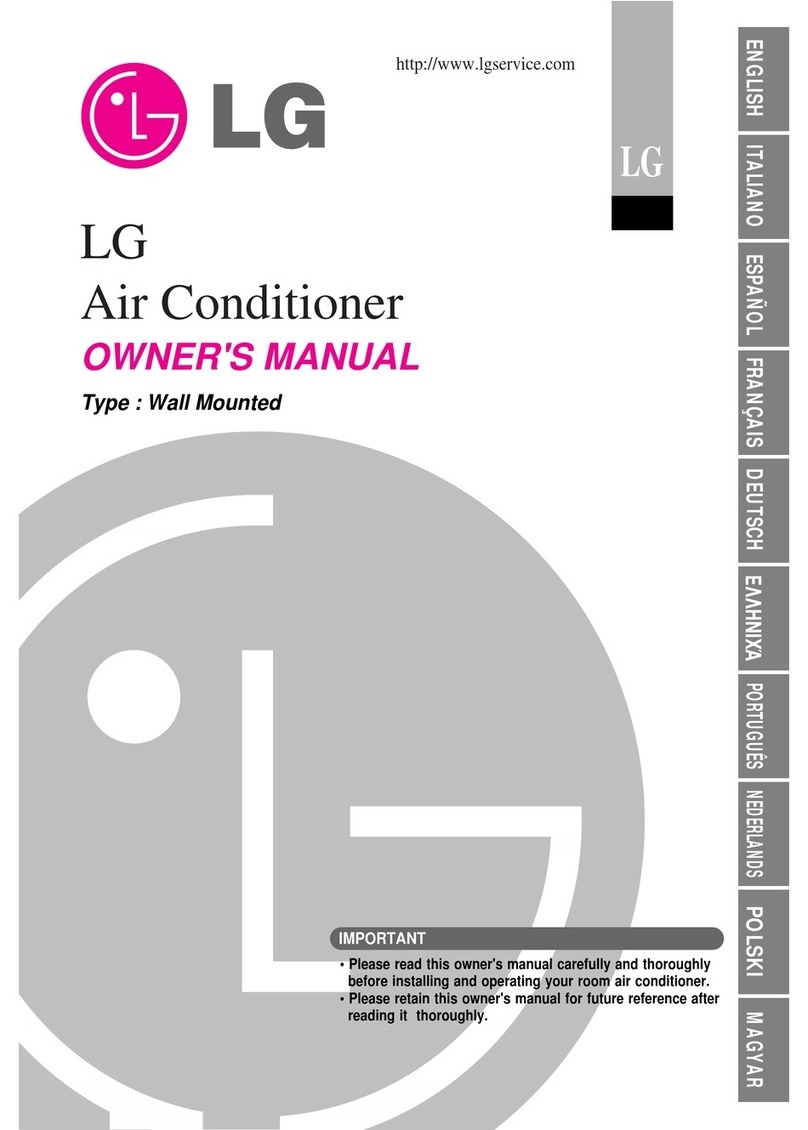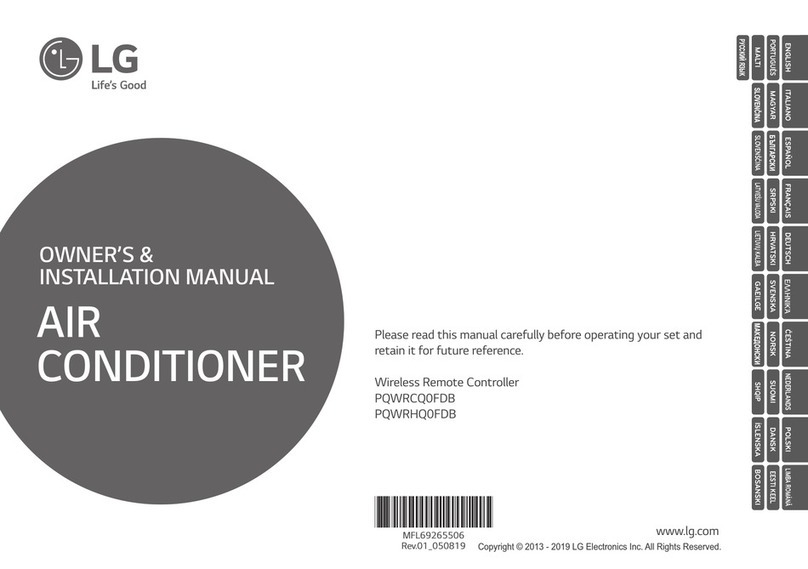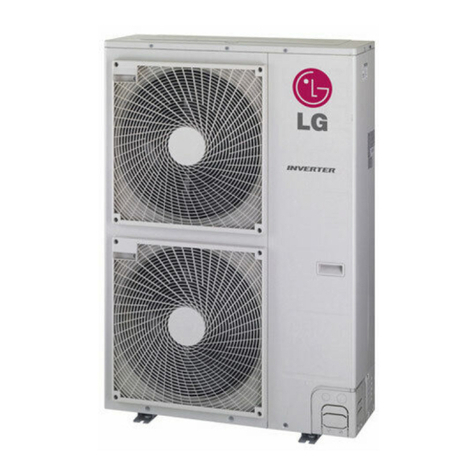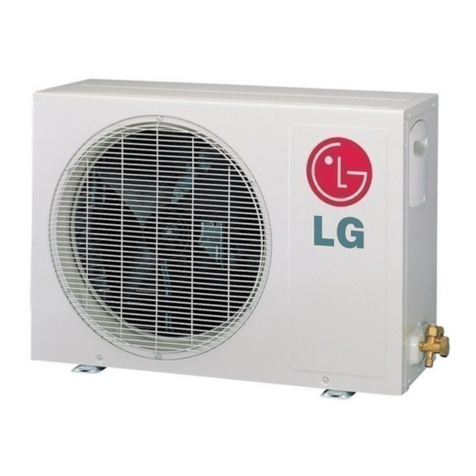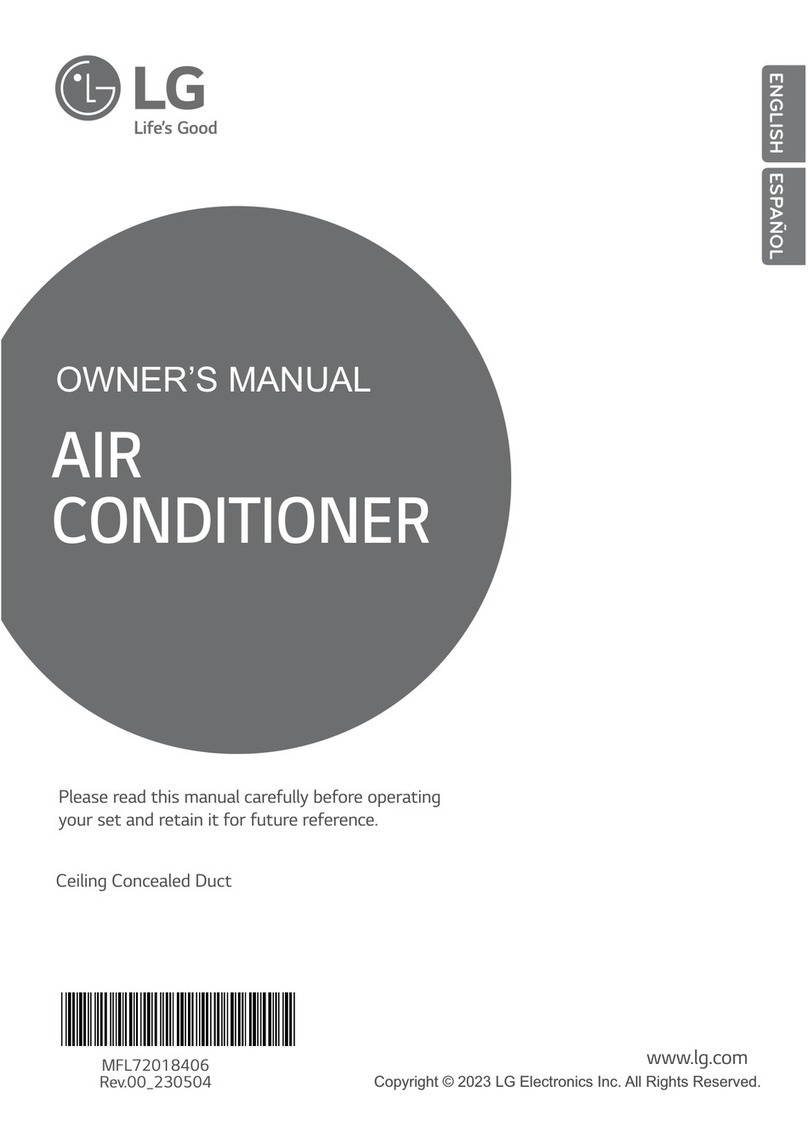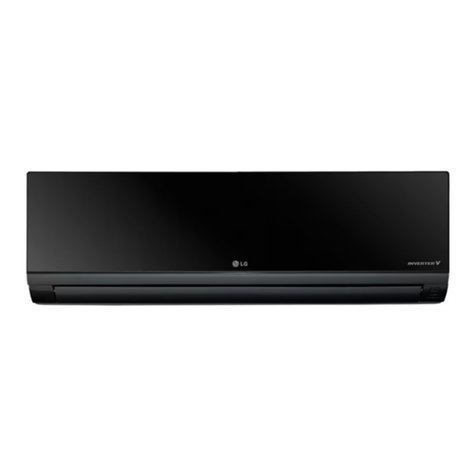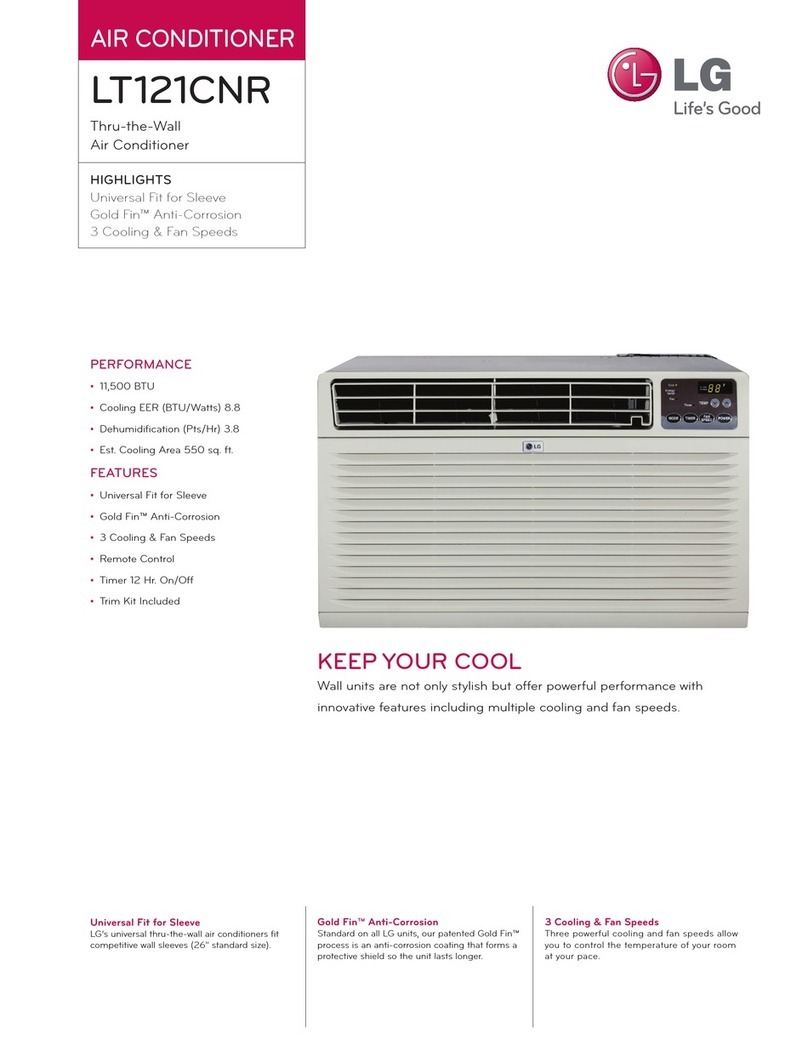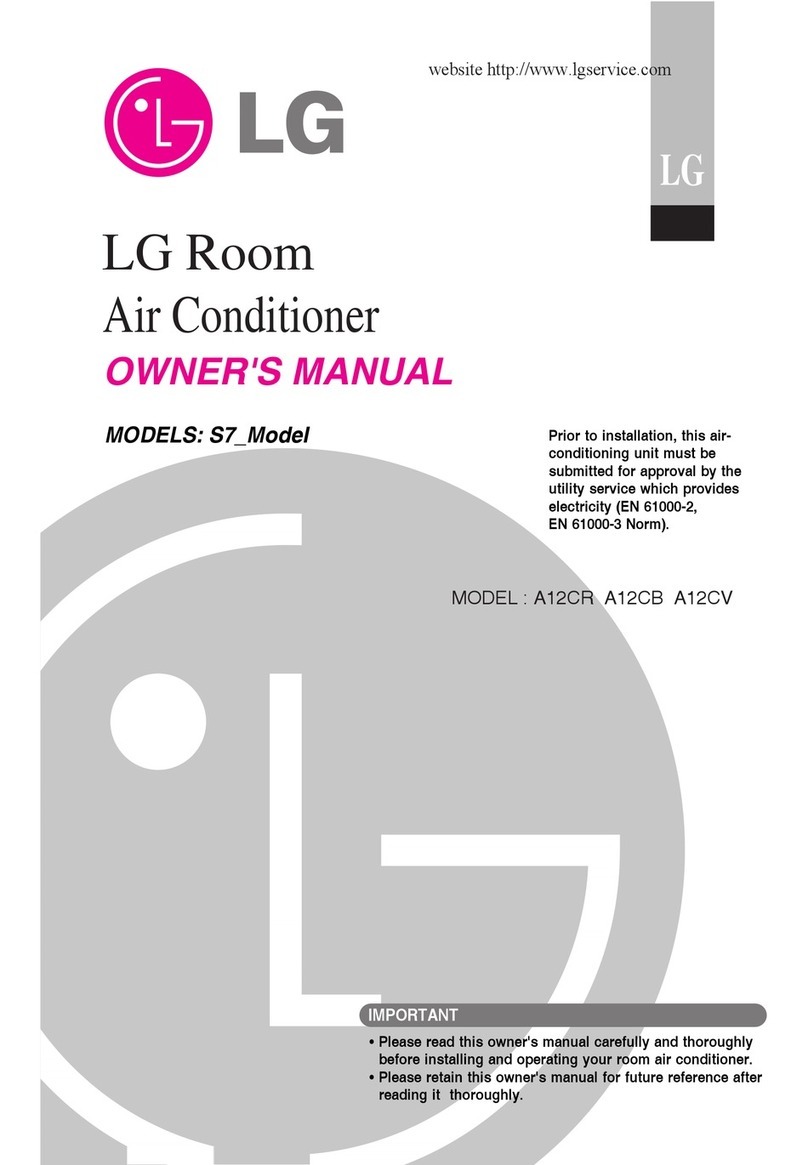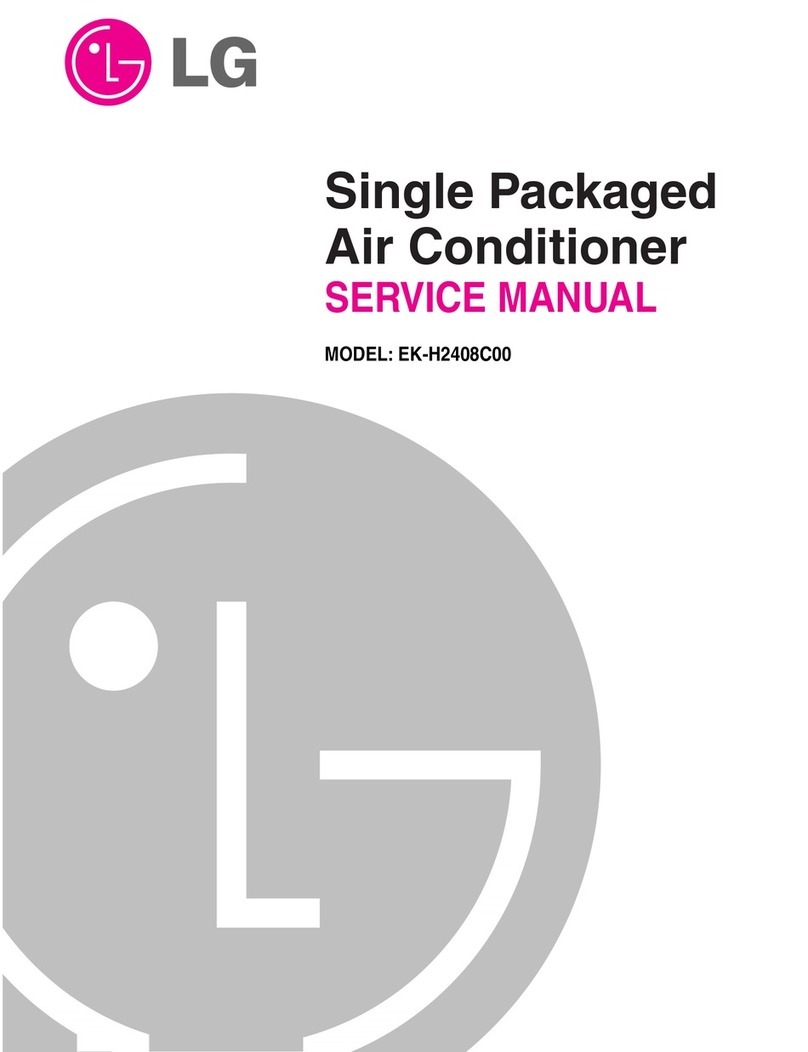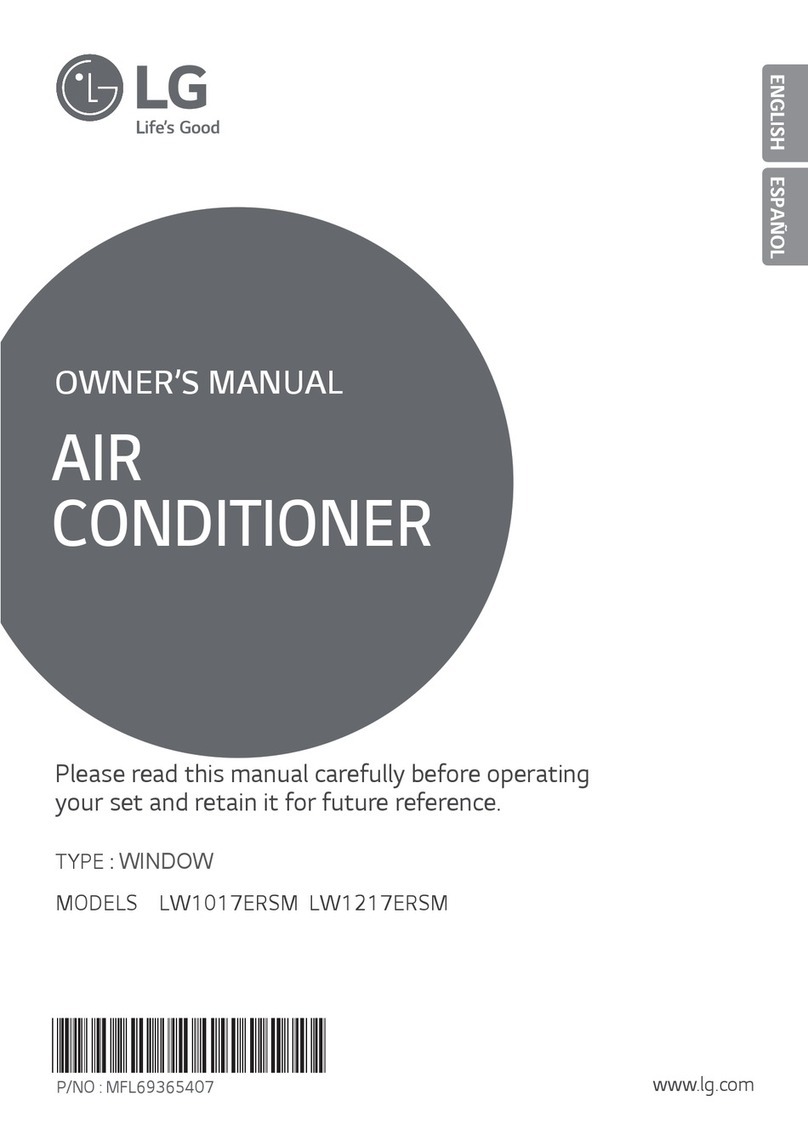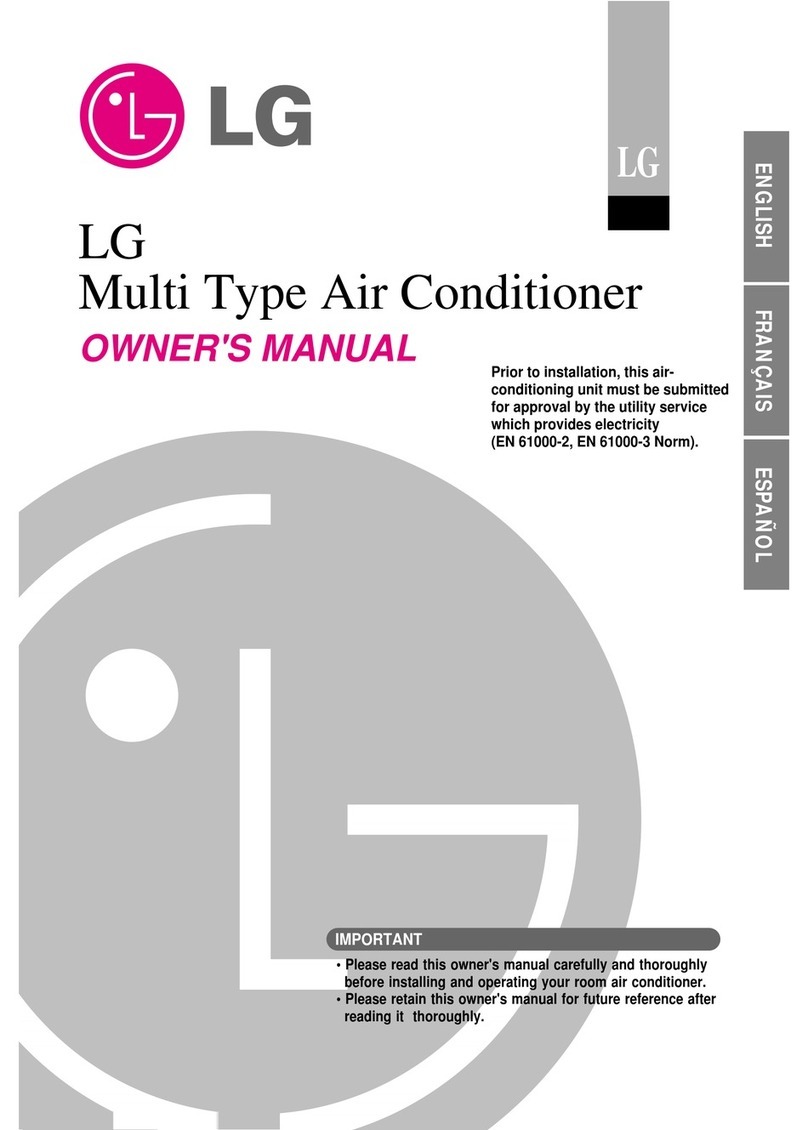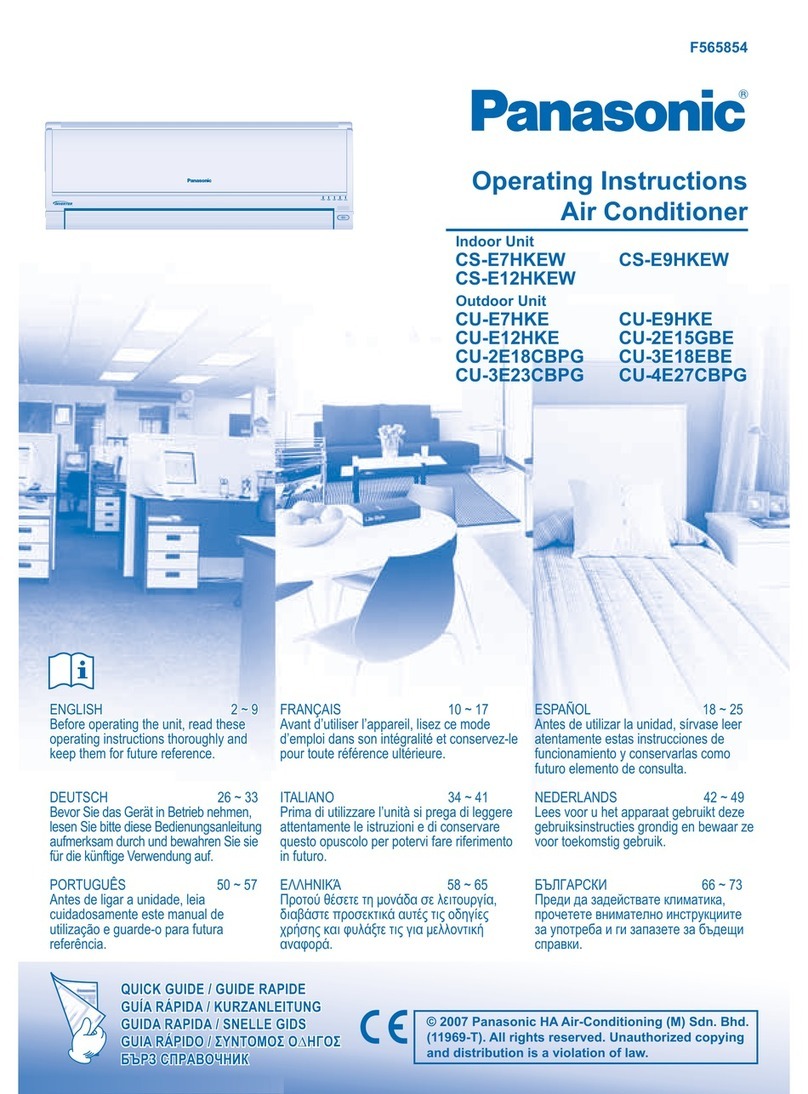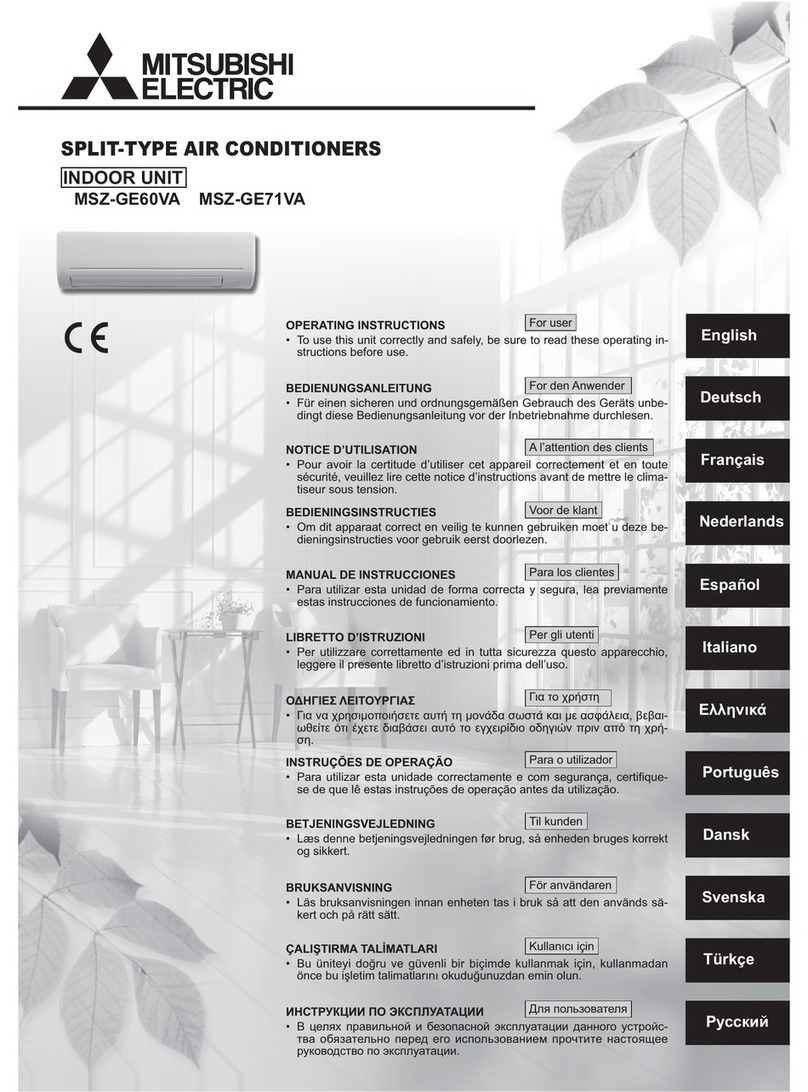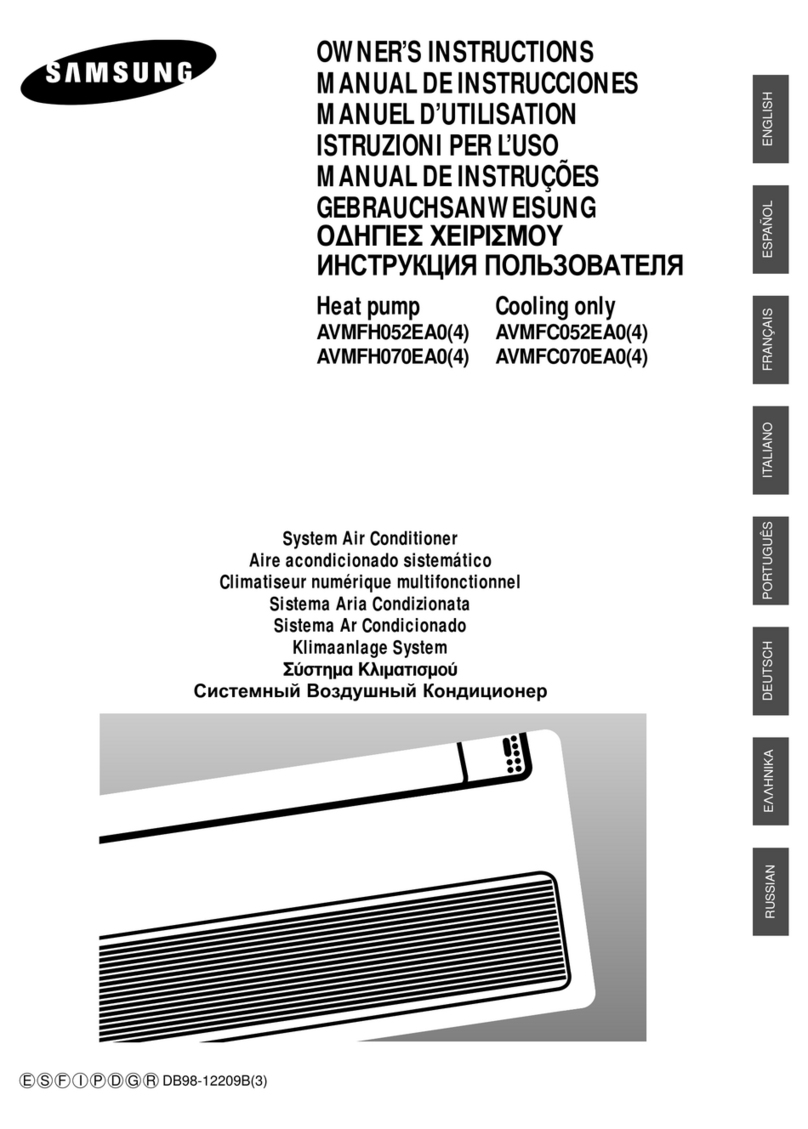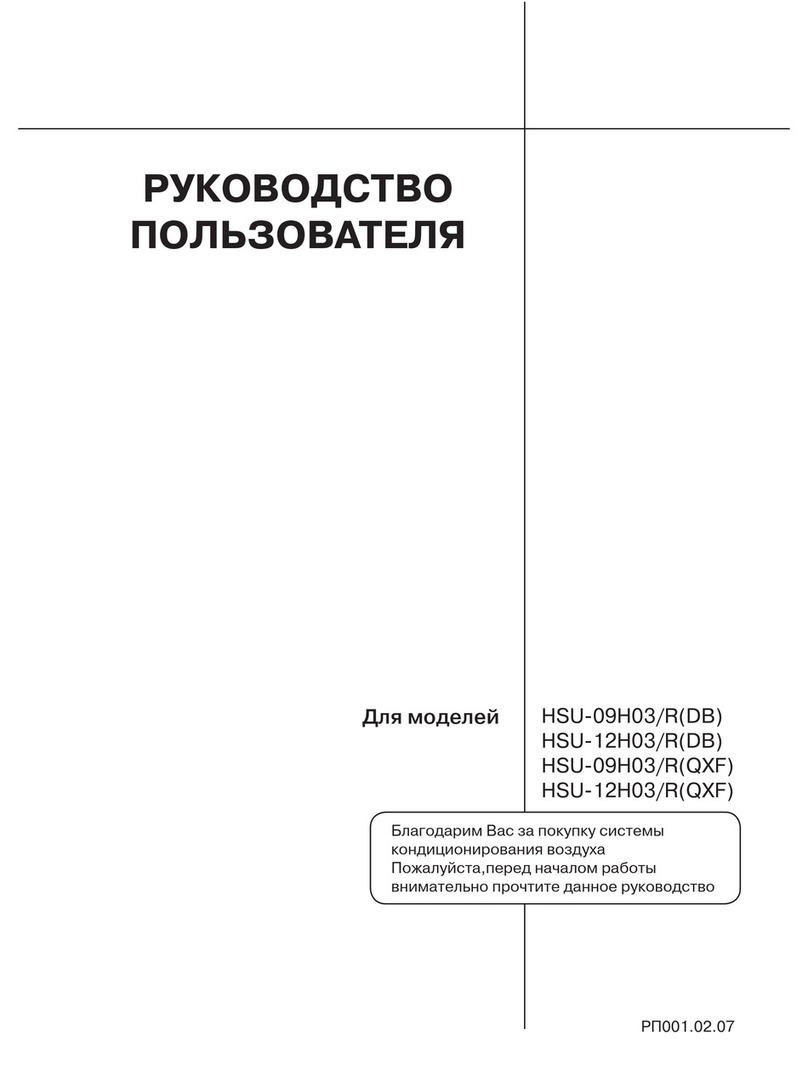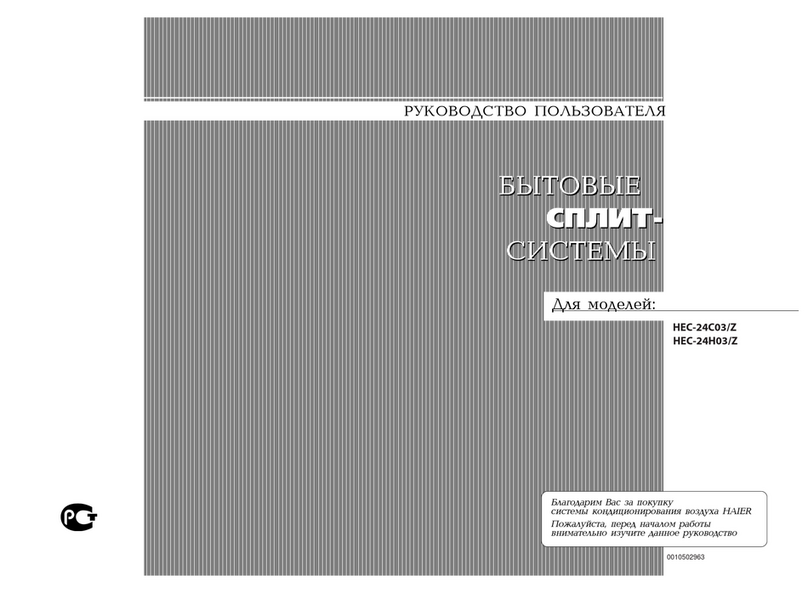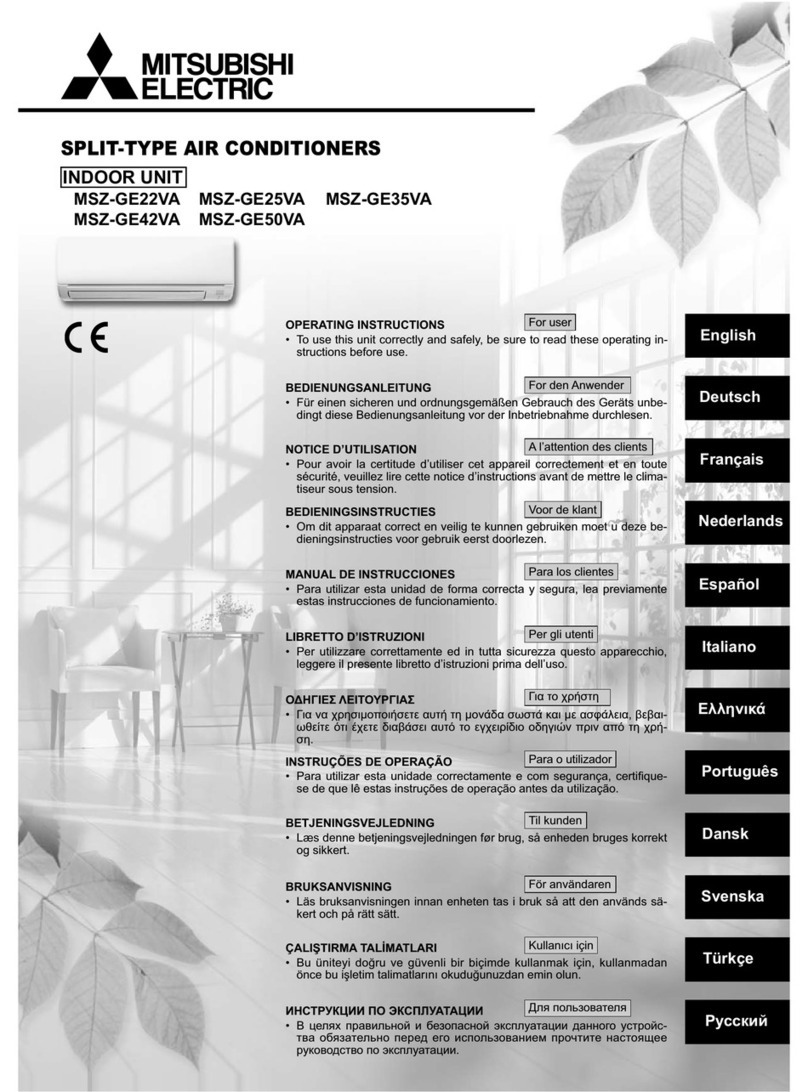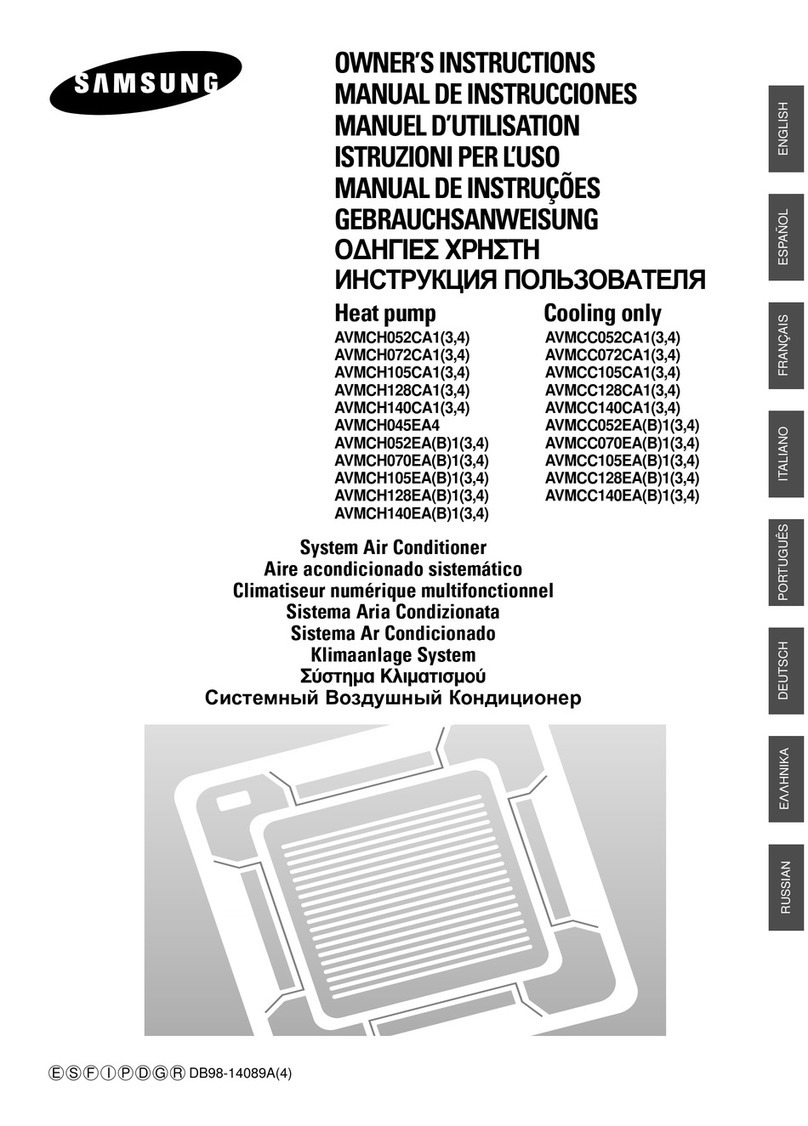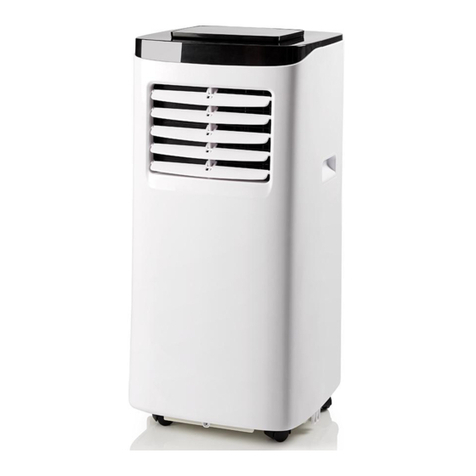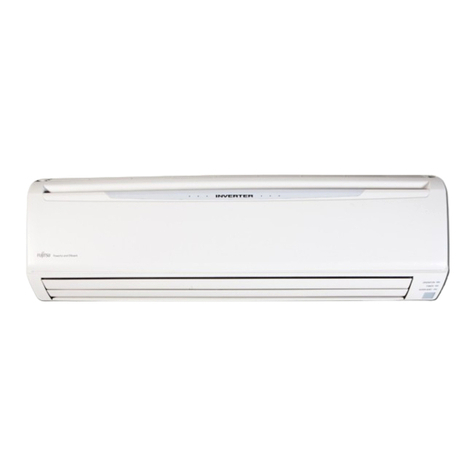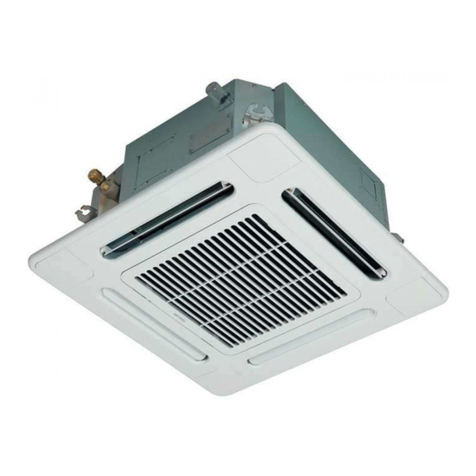CAUTION
CAUTION
WARNING
WARNING
4
Never touch the metal parts
of the unit when removing
the filter.
Do not clean the air
conditioner with water. Ventilate well when used
together with a stove, etc.
• They are sharp and may cause
injury. • Water may enter the unit and
degrade the insulation. It may
cause an electric shock.
• An oxygen shortage may occur.
When cleaning the unit, first
make sure the power and
breaker are turned off.
Do not put a pet or house
plant where it will be
exposed to direct air flow.
Do not use appliance for special
purpose such as animals or
vegetables, precision machine, or
conservation of art articles.
• Since the fan rotates at high
speed during operation, it may
cause injury.
• This could injure the pet or plant. • It may cause damage of animals
or vegetables or loss of property.
Stop operation in storm or
hurricanes. Hold the plug by the head
when taking it out. Turn off the main power
switch when not using it for
a long time.
• Operation with windows opened
may cause wetting of indoor and
soaking of household furniture.
• It may cause electric shock and
damage. • It may cause failure of product or
fire.
Do not place obstacles
around the absorption inlet
or output.
Ensure that an installation console of
the outdoor appliance is not damaged
due to the use for a long time.
Always insert the filters
securely. Clean it every two
weeks.
• It may cause failure of appliance
or accident. • If leaving appliance damaged,
there is concern of damage due
to the falling of product.
• Operation without filters will
cause failure.
Do not use strong detergent
such as wax or thinner but
use a soft cloth.
Do not place heavy object on the
power cord and take care so that
the cord should not be pressed.
Do not drink water drained
from air conditioner.
• Appearance may be deteriorated
due to change of product color or
scratching of its surface.
• There is danger of fire or electric
shock. • It contains containments and will
make you sick.
Ventilate before operating air conditioner
when gas goes out. Do not disassemble or modify products
randomly.
• It may cause explosion, fire, and burn. • It may cause failure and electric shock.
If water enters the product, turn off the the
power switch of the main body of appliance.
Contact service center after taking the
power-plug out from the socket.
Do not direct airflow at room occupants only.
• This could damage your health.

